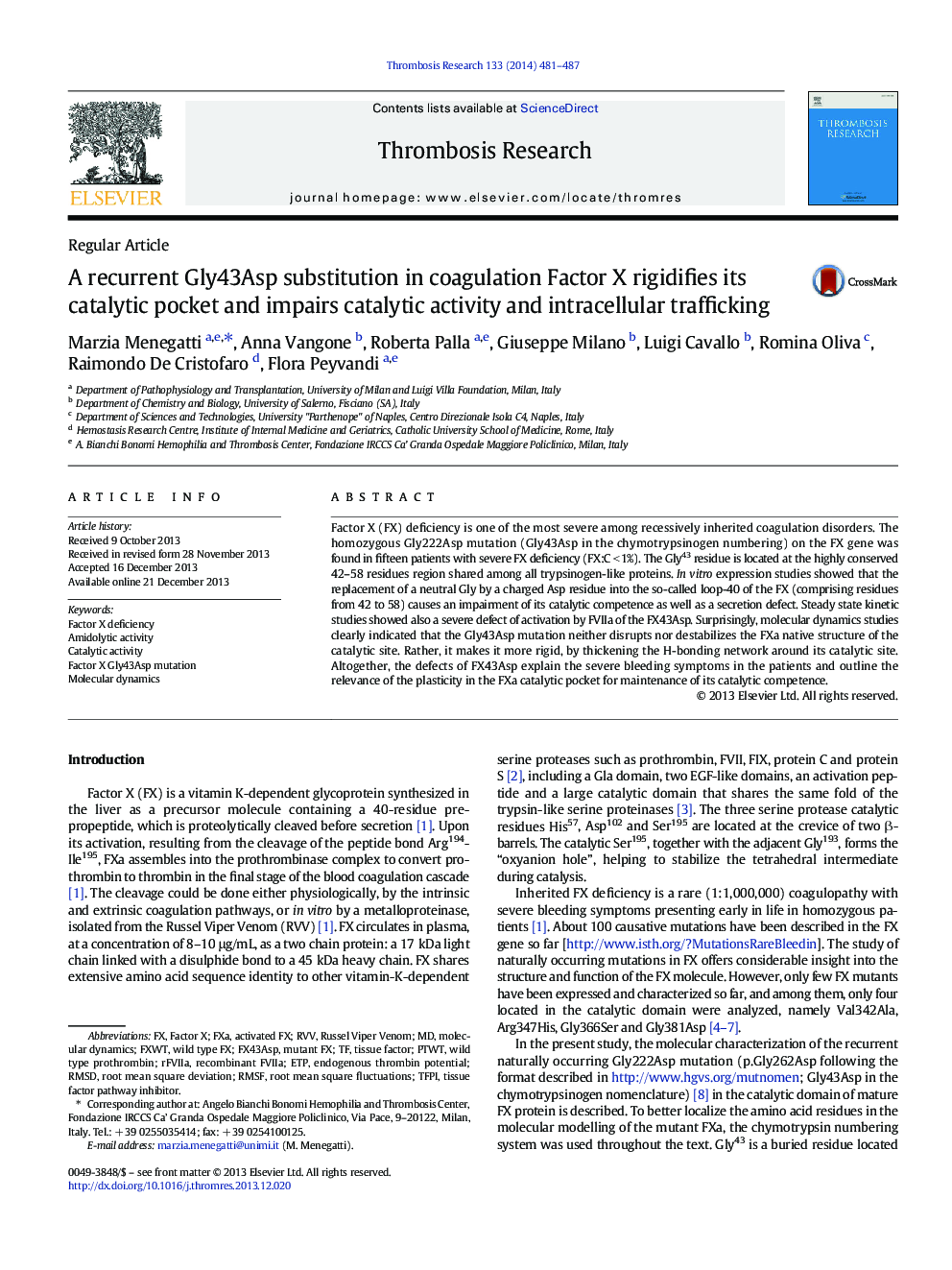| Article ID | Journal | Published Year | Pages | File Type |
|---|---|---|---|---|
| 6002447 | Thrombosis Research | 2014 | 7 Pages |
Factor X (FX) deficiency is one of the most severe among recessively inherited coagulation disorders. The homozygous Gly222Asp mutation (Gly43Asp in the chymotrypsinogen numbering) on the FX gene was found in fifteen patients with severe FX deficiency (FX:C <Â 1%). The Gly43 residue is located at the highly conserved 42-58 residues region shared among all trypsinogen-like proteins. In vitro expression studies showed that the replacement of a neutral Gly by a charged Asp residue into the so-called loop-40 of the FX (comprising residues from 42 to 58) causes an impairment of its catalytic competence as well as a secretion defect. Steady state kinetic studies showed also a severe defect of activation by FVIIa of the FX43Asp. Surprisingly, molecular dynamics studies clearly indicated that the Gly43Asp mutation neither disrupts nor destabilizes the FXa native structure of the catalytic site. Rather, it makes it more rigid, by thickening the H-bonding network around its catalytic site. Altogether, the defects of FX43Asp explain the severe bleeding symptoms in the patients and outline the relevance of the plasticity in the FXa catalytic pocket for maintenance of its catalytic competence.
